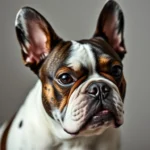
Introduction
Dog breeds represent the incredible diversity of canines that have been shaped by thousands of years of domestication and selective breeding. Each breed comes with its own unique characteristics, history, and purpose, making the world of dogs a fascinating one. Choosing the right breed is essential for potential dog owners, as it directly influences their satisfaction and the well-being of the dog. Factors like lifestyle, living conditions, and personal preferences play vital roles in selecting a breed that fits well into a family structure.
Overview of Dog Breeds
What is a Dog Breed?
A dog breed is a specific group of domestic dogs that share distinct physical and behavioral traits. These traits arise from a combination of genetics, environment, and training. Breeds are often classified based on their purpose, size, temperament, and appearance, leading to breed standards that help maintain specific characteristics over generations.
History of Dog Breeding
The history of dog breeding is rich and complex. It dates back to the early domestication of wolves, where humans began to select for specific traits beneficial for hunting, herding, and companionship. Over time, this led to the establishment of distinct breeds, each crafted to fulfill particular roles in human society. The evolution of breeds has been influenced by geographical location, cultural preferences, and specific needs, resulting in the vast array of breeds we see today.
Categories of Dog Breeds
Dog breeds can be categorized into several groups based on their traditional roles and characteristics:
- Working Dogs: Bred for tasks such as guarding, pulling sleds, and rescue operations.
- Herding Dogs: Developed to herd livestock and assist farmers.
- Sporting Dogs: Known for their hunting skills and keen sense of smell.
- Terriers: Originally bred to hunt vermin, known for their feisty temperament.
- Toy Breeds: Small dogs bred for companionship and affection.
- Non-Sporting Dogs: A diverse group of breeds that don’t fit neatly into other categories.
- Hound Dogs: Bred for hunting and tracking, known for their keen sense of smell.
The Hygenhund
Introduction to the Hygenhund
The Hygenhund, or Norwegian Hound, is a breed that originated in Norway, primarily bred for hunting small game such as hare and fox. This breed is named after its creator, the Norwegian hunter and dog breeder, Johan H. Hygen. The Hygenhund is known for its exceptional tracking ability and friendly demeanor, making it a favored breed among hunters in Norway and other parts of Europe.
Physical Characteristics
Hygenhunds are medium-sized dogs, typically weighing between 40 to 60 pounds. They possess a well-proportioned body that reflects strength and agility. Their coat is short and dense, providing protection against harsh weather conditions. Common color variations include white with orange or black markings, creating an attractive appearance. The breed has distinctively long ears that hang close to the head and a tail that is often carried high, which adds to its expressive nature.
Temperament and Personality
The Hygenhund is known for its friendly and sociable temperament. They are typically good with children and can get along well with other pets in the household. This breed is affectionate and enjoys being part of family activities. They possess a strong prey drive, which means they should be monitored around smaller pets. Their intelligence and eagerness to please make them relatively easy to train, although they can be a bit stubborn at times.
Health Considerations
Hygenhunds are generally healthy dogs with a lifespan of about 12 to 14 years. However, like many breeds, they can be prone to certain health issues, including hip dysplasia and eye problems. Regular veterinary check-ups and a healthy diet can help mitigate these risks and ensure a long, healthy life for your Hygenhund.
The Hygenhund’s Role and Purpose
Traditional Uses
Historically, the Hygenhund has been used primarily for hunting purposes. Their impressive tracking abilities and stamina make them excellent companions for hunters. They have been trained to work alongside hunters in various terrains, showcasing their versatility and skill in the field.
Modern Applications
In contemporary settings, Hygenhunds also serve as family pets, therapy dogs, and companions for active individuals. Their friendly nature and adaptability make them suitable for various roles, providing emotional support and companionship to those in need. As they bond with their families, Hygenhunds thrive in environments where they receive love, attention, and adequate exercise.
Care and Training of the Hygenhund
Grooming Needs
Caring for a Hygenhund requires regular grooming to maintain their coat and overall hygiene. Their short, dense fur needs to be brushed at least once a week to remove loose hair and prevent matting. Bathing should be done as needed, particularly after outdoor activities, to keep their coat clean and healthy.
Diet and Nutrition
A well-balanced diet is crucial for the health of your Hygenhund. High-quality dog food formulated for their size and age should be provided. It’s important to keep an eye on their weight, as Hygenhunds can be prone to obesity if overfed or under-exercised. Generally, feeding them twice a day and monitoring their caloric intake can keep them in optimal shape.
Exercise Requirements
Hygenhunds are active dogs that require regular exercise to stay healthy and happy. Daily walks, playtime, and mental stimulation are essential to keep them engaged. Activities such as running, hiking, or games of fetch are excellent ways to provide the necessary physical and mental exercise for your Hygenhund.
Training Tips
Training a Hygenhund can be a rewarding experience due to their intelligence and eagerness to please. Positive reinforcement techniques work best, as they respond well to praise and rewards. Early socialization is important, as it helps them develop into well-rounded dogs. Basic commands, leash training, and exposure to various environments will contribute to their overall behavior and adaptability.
Comparing the Hygenhund with Other Breeds
Similar Breeds
When considering the Hygenhund, it’s helpful to look at other breeds with similar traits. Breeds like the Basset Hound and Beagle share the hound lineage and similar physical characteristics. They also possess strong tracking instincts and friendly temperaments, making them excellent family pets.
Differences in Temperament and Care
While the Hygenhund has a friendly disposition, breeds like the Labrador Retriever are often more energetic and require more intense exercise. The Beagle, on the other hand, may be more stubborn during training sessions. Understanding these differences can help potential dog owners make informed decisions based on their lifestyle and preferences.
Best Matches for Different Lifestyles
If you live in an urban environment, the Hygenhund may fit well due to its moderate exercise needs and sociable nature. However, if you have a more active lifestyle or live in a rural area, breeds like the Labrador Retriever or Australian Shepherd might also cater to your requirements, providing higher energy levels and adaptability for outdoor activities.
Finding a Hygenhund
Breeders vs. Adoption
When looking for a Hygenhund, potential owners can choose between reputable breeders or adoption from rescue organizations. Each option has its pros and cons. Breeders can provide specific lineage and health information, ensuring a purebred dog. Conversely, adopting from a shelter can save a life and provide a loving home to a dog in need.
What to Look for in a Breeder
If you choose to go through a breeder, it’s essential to find a responsible one. Look for breeders who are knowledgeable about the breed and can provide health clearances for the puppies. Key questions to ask include:
- What health tests have been done on the breeding dogs?
- Can you meet the puppy’s parents?
- What socialization practices do you implement?
Adoption Organizations
Several organizations focus on rescuing and rehoming Hygenhunds and similar breeds. Local shelters and breed-specific rescue groups can be excellent resources for finding dogs that need loving homes. Always ensure that the organization conducts proper health checks and behavioral assessments before adopting.
Conclusion
In summary, the Hygenhund is a unique breed with a rich history, friendly temperament, and moderate exercise needs. They make excellent companions for active families and individuals who can provide them with love, attention, and proper care. Understanding the breed’s characteristics, health considerations, and care requirements can help potential owners make informed decisions.
As you consider adding a Hygenhund to your family, take time to research further and reflect on how this breed can fit into your lifestyle. Each dog has its own personality and quirks, making the experience of dog ownership both rewarding and fulfilling.









